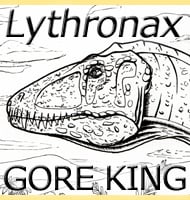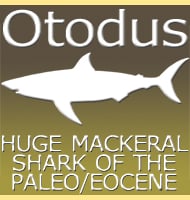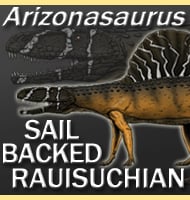In Depth
Qianzhousaurus is a genus of medium sized tyrannosaurid dinosaur that lived in China during the late Cretaceous, and at the time of its description, unlike any other tyrannosaur previously seen. Some Asian tyrannosaur genera such as Alioramus have been noted for having gracile builds and proportionately slightly longer snouts than their larger cousins such as Tarbosaurus and Tyrannosaurus. In Qianzhousaurus however the snout is particularly long, so long in fact that Qianzhousaurus quickly assumed the nickname of ‘Pinocchio rex’.
Why Qianzhousaurus developed such a specialised skull is perhaps simply a case of predatory specialisation. With Zhuchengtyrannus and the aforementioned Tarbosaurus Asia already had more than one genus of large tyrannosaur hunting on it and both of these genera display the robust, shorter and deeper snouts more commonly associated with tyrannosaurs. These skulls were evolved to house huge jaw closing muscles as well as amplify the effects of them so that the larger tyrannosaurs had crushing bites that could kill larger tougher prey animals such as large hadrosaurs, ceratopsians and perhaps even ankylosaurs. Their specialisation however was of no practical benefit for killing the smaller dinosaurs that if they could catch, they would not need such a powerful bite force to kill. This meant that there was a gap in the ecosystem, and this is where genera like Qianzhousaurus came in. As already stated Qianzhousaurus had a very long snout for a tyrannosaur, but the skull was also not very deep, and this all reduced space for the jaw closing muscles. By extension this meant that because the jaw closing muscles could not be as large, Qianzhousaurus would have nothing near the bite force of larger genera such as Tarbosaurus. This idea is also backed up by the teeth of Qianzhousaurus which were also proportionately smaller and not as deep rooted as the teeth of larger genera, which means that they were not being put under the same kinds of stress. However, just because the bite was weaker than a large tyrannosaur, it does not mean it was an evolutionary design weakness. While reconstructions of Qianzhousaurus are still sketchy, we know by the overall form of the known fossil remains that Qianzhousaurus was also lightly built, meaning that while Qianzhousaurus were not as strong as their larger relatives, they were faster and more agile than them. This meant that they could more easily track down and hunt the faster prey dinosaurs such as smaller ornithopods, ornithomimids and oviraptosaurs, most of which would have been too fast for a large tyrannosaur to bother with. Most predators ambush their prey, bursting out from a hidden location to sprint after a prey animal, and while Qianzhousaurus was faster than a large tyrannosaur, it would have still had to struggle to keep up with a medium sized ornithomimid for any length of time. This is where a long snout comes into play, Qianzhousaurus would not have to overtake a prey animal, just come close enough to reach it with is jaws. Overall in terms of niche, tyrannosaurs like Qianzhousaurus would have fallen in between smaller predatory dinosaurs such as dromaeosaurs and troodonts, and their larger tyrannosaur relatives.
Other dinosaurs that Qianzhousaurus may have come into contact with include oviraptorids like Banji, Ganzhousaurus, Nankangia, Huanansaurus and Jiangxisaurus, therizinosaurs like Nanshiungosaurus, and the sauropod Gannansaurus.
Further Reading
- A new clade of Asian Late Cretaceous long-snouted tyannosaurids. - Nature Communications 1-10. - J. Lu, L. Yi, and S. L. Brusatte, L., Yang, H. Li, & L. Chen - 2014.











